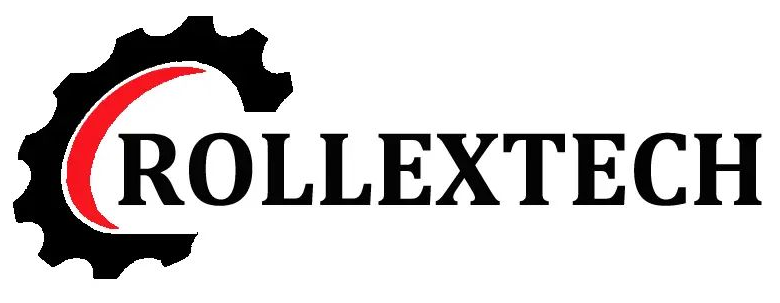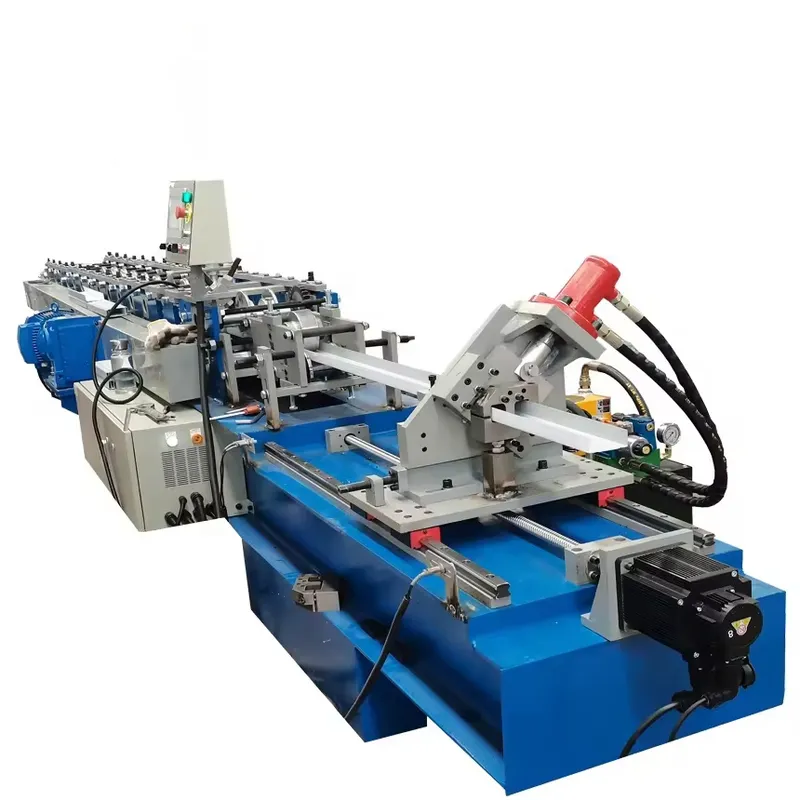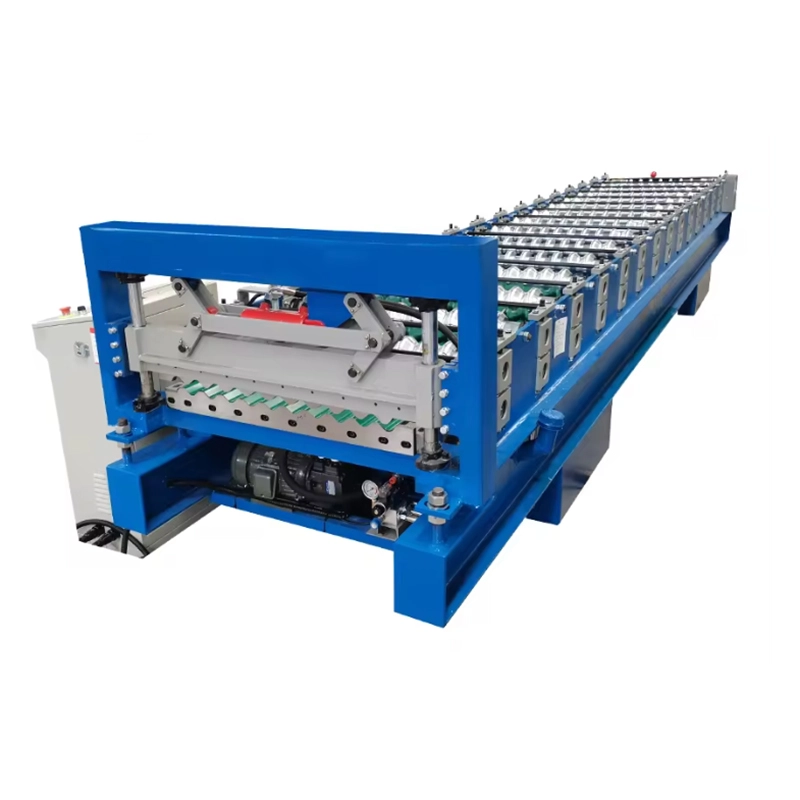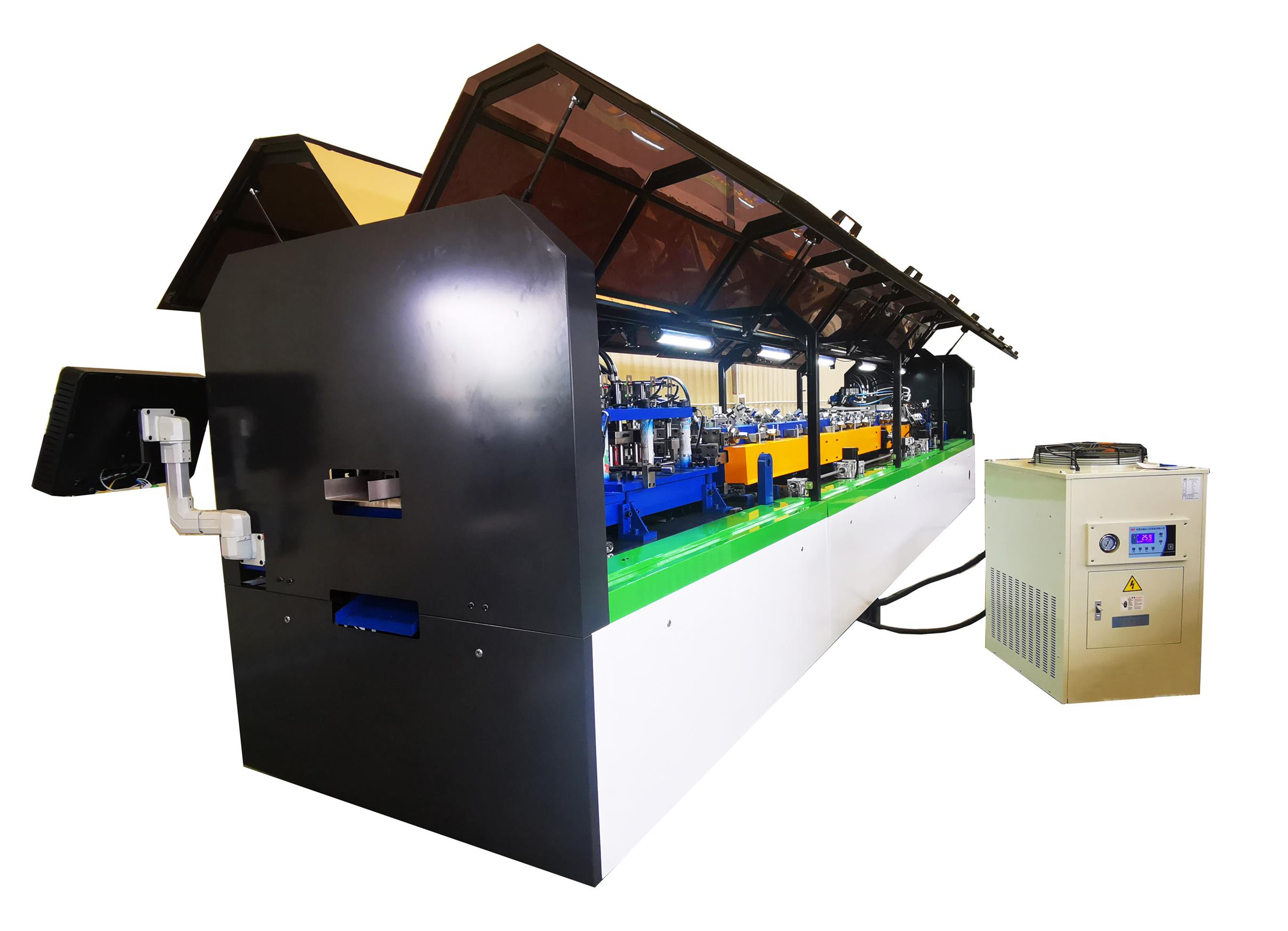In the huge production system of modern industry, polyurethane board foam machine plays an extremely important role and can be called the “behind-the-scenes hero” of polyurethane foam board production. What exactly is it? Simply put, the polyurethane board foam machine is a key piece of equipment specially used to produce polyurethane foam board. The polyurethane raw materials are converted into foam boards with specific properties through a series of precise processes.
Polyurethane foam board, with its excellent thermal insulation, sound absorption, and noise reduction, waterproof and moisture-proof, as well as lightweight and high strength, has been widely used in many industries such as construction, cold chain, transportation, packaging, etc. In the construction field, it is used as exterior wall insulation and roof insulation materials to effectively reduce the energy consumption of buildings and create a comfortable temperature environment indoors; in the cold chain industry, it is an indispensable thermal insulation material for cold storage and refrigerated trucks to ensure the stability of the low-temperature environment and extend the shelf life of goods; in the transportation industry, it is used for the interior and sound insulation and noise reduction materials of cars, trains, and airplanes, which improves the comfort of driving; in the packaging industry, it provides reliable buffer protection for all kinds of fragile and valuable items. Behind all these applications, the efficient operation of the polyurethane board foam machine is indispensable.

The working principle of polyurethane board foam machine
The working principle of the polyurethane board foam machine contains the ingenious fusion of chemical and mechanical processes, like magical magic in the microscopic world, which ultimately creates a practical polyurethane foam board. The core is to mix a variety of raw materials in a specific proportion to trigger a series of chemical reactions, thereby producing foam materials with unique properties.
The main raw materials of the polyurethane board foam machine include isocyanate and polyol, which are the protagonists of this “magic show”. Isocyanate is chemically active and contains highly unsaturated isocyanate groups (-NCO). It can react violently with compounds containing active hydrogen atoms and plays a key role in connecting and curing polyurethane synthesis. Polyols provide the hydroxyl groups (-OH) required for the reaction. Its type and structure determine the key properties of polyurethane foam, such as hardness and flexibility. For example, polyether polyols are often used to prepare soft polyurethane foams, giving the foams good elasticity and resilience, just like the sofa cushions and mattresses we use daily; while polyester polyols are more used to make hard polyurethane foams, giving the foams high strength and stability, and are commonly found in building insulation boards, insulation layers of cold chain equipment, etc.
When these main raw materials enter the polyurethane board foam machine, they will be delivered to the mixing system in a pre-set precise ratio. In this process, accurate metering is essential, and any deviation in the ratio may lead to unstable product performance. Taking the production of automotive interior parts as an example, if the ratio of isocyanate and polyol is unbalanced, the hardness of the seat foam produced may be inappropriate, affecting the comfort and safety of riding.
In addition to the main raw materials, foaming agents are also indispensable supporting roles. Foaming agents are divided into physical foaming agents and chemical foaming agents. Physical foaming agents such as chlorofluorocarbons and hydrocarbons achieve foaming through changes in their physical state during the foaming process, such as evaporation under heat to produce gas. Chemical foaming agents produce gas through their chemical reactions. For example, azodicarbonamide (AC) decomposes to produce nitrogen, carbon monoxide, and other gases when heated. The gas produced by the foaming agent forms tiny bubbles in the polyurethane system. These bubbles are evenly distributed and gradually expand, just like countless tiny balloons slowly inflating in the “ocean” of polyurethane, thereby expanding the volume of polyurethane and forming a foam structure.
In the process of mixing raw materials, to promote the smooth progress of the reaction, catalysts, foam stabilizers, and other additives are also added. Catalysts can speed up the reaction rate between isocyanate and polyol, just like stepping on the “accelerator pedal” for chemical reactions. Commonly used catalysts include tertiary amine compounds and organotin compounds, which can significantly shorten the production cycle and improve production efficiency without affecting the final performance of the product. Foam stabilizers play a role in stabilizing the foam structure, preventing bubbles from merging and breaking during the formation process, ensuring the uniformity and stability of the foam, just like the “scaffolding” in construction, and providing solid support for the molding of the foam.
The mixed raw materials quickly undergo a polymerization reaction inside the machine to form a macromolecular chain of polyurethane. This process is accompanied by the release of a large amount of heat and is a typical exothermic reaction. As the reaction proceeds, the gas produced by the foaming agent is gradually wrapped in the growing polyurethane macromolecular network, causing the mixture to gradually expand and fill the mold or molding area. At this stage, the control of temperature and pressure plays a key role in the quality of the foam. The right temperature can ensure the smooth progress of the reaction. Too high a temperature may cause the reaction to be too fast, causing defects such as cracking and deformation in the foam; too low a temperature will slow the reaction and affect production efficiency. The control of pressure is also crucial. Appropriate pressure helps the uniform distribution and stable growth of bubbles. Too much or too little pressure may lead to uneven foam structure.
After a period of reaction and curing, the polyurethane foam gradually takes shape to form a foam board with a certain shape and performance. The curing process is a process of further cross-linking and strengthening between polyurethane macromolecular chains so that the foam board obtains the final strength and stability. From the initial raw material mixing to the final foam board molding, the polyurethane board foam machine transforms simple raw materials into high-performance materials with wide application value through precise control and ingenious process design, providing a solid material foundation for the development of many industries.

Overview of all types
There are many “members” in the polyurethane board foam machine family. Different types of machines have their advantages in pressure control, foaming effect, and applicable scenarios, just like eighteen kinds of weapons, each showing its magical powers to meet diverse production needs. Among them, high-pressure foaming machines and low-pressure foaming machines are the two most common types. They are like the two “schools” in the field of polyurethane board foam machines, each with its own unique “martial arts secrets”.
High-pressure foaming machines are famous for their powerful pressure output, which is usually around 10-18MPa. Like a martial arts master with deep internal strength, they can inject raw materials into the mixing chamber in a high-pressure jet. During the mixing process, it uses high-pressure impact mixing to make the raw materials fully and evenly mixed in an instant, with an excellent mixing effect. This efficient mixing method makes the generated foam pores small and uniform, just like a carefully carved work of art, every detail is handled just right, greatly improving the quality of the product. In the production of automotive interiors, the seat foam produced by the high-pressure foaming machine not only has excellent comfort but also has good support and stability, which can provide reliable protection for drivers and passengers.
Since the high-pressure foaming machine works under high pressure, its raw material metering accuracy is extremely high, and it can accurately control the proportion of various raw materials to ensure that the performance of each batch of products is stable and consistent. This advantage makes it very popular in the manufacture of products with strict requirements on product quality and complex production processes, such as the production of refrigerator insulation. The refrigerator insulation layer needs to have excellent thermal insulation performance. The high-pressure foaming machine can accurately control the proportion of raw materials, and the foam produced has stable thermal insulation performance, which can effectively reduce the energy consumption of the refrigerator and extend the shelf life of food.
The low-pressure foaming machine is another style of “master”. Its output pressure is relatively low, generally between 1-5MPa. The low-pressure foaming machine usually adopts the method of stirring and mixing, just like a warrior who is good at using softness to overcome hardness. The raw materials are fully stirred and evenly mixed by the rotation of the stirring blades. However, compared with the high-pressure foaming machine, the uniformity of this mixing method is slightly inferior, and the foam cells generated are relatively large and not very uniform. However, in some application scenarios where the uniformity of the foam cells is not high, this feature of the low-pressure foaming machine does not affect its function. In the production of small insulation boards, the low-pressure foaming machine can meet the production needs, and the cost is relatively low, with a high-cost performance.
The structure of the low-pressure foaming machine is relatively simple, and the price is more affordable. It is a good choice for some small enterprises or producers with limited budgets. In the case of a small production scale, the low-pressure foaming machine can flexibly adjust the production rhythm to meet diversified production needs. Moreover, the operation of the low-pressure foaming machine is relatively simple, and the technical requirements for the operator are low, and it is easy to use.
In addition to high-pressure foaming machines and low-pressure foaming machines, there are some other types of polyurethane board foaming machines, such as high-speed impeller foaming machines, high-pressure air foaming machines, and medium and low-pressure foaming machines with blasting. The high-speed impeller foaming machine introduces air into the foaming agent aqueous solution through a high-speed rotating impeller to produce foam. Its foaming speed is fast, but the stability and uniformity of the foam are relatively poor. It is often used in some temporary building insulation or packaging fields where the foam quality requirements are not high. The high-pressure air foaming machine uses high-pressure air to blow out the foaming agent to form foam. It is widely used in the production of PU soft and hard foam toys, cosmetic cotton balls, car seats, and other products. It is controlled by PLC as a whole, is simple and convenient to operate, and has an alarm function to ensure the safety of electrical appliances. The medium and low-pressure foaming machine combines the characteristics of air blowing and medium and low pressure and is suitable for a variety of industries, such as new energy, military industry, medical treatment, aviation, etc. In these fields, it can play its unique advantages and provide reliable support for the production of products.

Application of polyurethane board foam machine
The polyurethane board foam machine has a wide range of applications in many industries due to its unique performance advantages. It is like a versatile expert and contributes important forces to the development of different fields.
- In the construction industry, the polyurethane board foam machine can be said to be a great show of its skills and has become a “star equipment” in the field of building insulation. The polyurethane foam board it produces is an excellent insulation material with extremely low thermal conductivity, which can effectively prevent the transfer of heat, just like putting on a warm “cotton-padded jacket” for the building, greatly reducing the energy consumption of the building. In the insulation of building exterior walls in cold northern regions, polyurethane foam boards can effectively resist severe cold, keep indoor warmth, reduce heating energy consumption, and make important contributions to energy conservation and emission reduction. It also has good waterproof performance, can prevent rainwater penetration, protect the structure of the building from erosion, and extend the service life of the building. Moreover, the installation and construction of polyurethane foam boards are very convenient, which can greatly shorten the construction period, reduce construction costs, and improve the efficiency of construction projects.
- The cold chain industry is also one of the important application areas of polyurethane board foam machines. In cold chain equipment such as cold storage and refrigerated trucks, polyurethane foam boards play a key role as insulation materials. Cold storage needs to maintain a low-temperature environment to ensure the preservation and storage of goods such as food and medicine. The low thermal conductivity and excellent thermal insulation performance of polyurethane foam boards can effectively prevent the entry of external heat, maintain low-temperature stability in cold storage, and provide reliable protection for the preservation of goods. Refrigerated trucks also need to maintain low temperatures during transportation. Polyurethane foam boards can help refrigerated trucks maintain a low-temperature environment in the car to ensure the quality and safety of goods during transportation. In some long-distance cold chain transportation, refrigerated trucks use polyurethane foam boards as insulation materials, which can reduce the energy consumption of refrigeration equipment, reduce transportation costs, and improve transportation efficiency.
- The packaging industry is also inseparable from the support of polyurethane board foam machines. Polyurethane foam boards have the characteristics of lightweight, good cushioning performance, and high compressive strength. They are ideal materials for packaging all kinds of fragile and valuable items. In the packaging of electronic products, polyurethane foam boards can effectively protect electronic products from collisions and vibrations, ensuring the safety of products during transportation and storage. For some precision instruments, optical equipment, etc., the cushioning performance of polyurethane foam boards can provide reliable protection to prevent equipment from being damaged during transportation. Moreover, polyurethane foam boards can also be customized according to the shape and size of different items to improve the fit and protection effect of the packaging. In the packaging of some high-end electronic products, customized polyurethane foam boards can perfectly wrap the products and provide all-around protection, showing the unique advantages of polyurethane foam boards in the packaging field.

Buying Guide
If you are considering buying a polyurethane board foam machine, then the following points must not be ignored. They will be like an accurate navigator, leading you to choose the one that best suits your needs among many products, ensuring that the investment is worth the money.
- Production capacity is the key factor to be considered first, which directly determines the number of polyurethane foam boards that the machine can produce per unit of time. When determining the production capacity requirements, you need to make a comprehensive assessment based on your production plan and market demand. If you have a large order volume and strict delivery time requirements, it is particularly important to choose a machine with high production capacity. It can efficiently meet the needs of large-scale production and allow you to seize the opportunity in market competition. On the contrary, if your production scale is small or the product demand has a certain volatility, it is more appropriate to choose a machine with moderate production capacity and high flexibility, which can not only avoid the waste of resources caused by idle equipment but also make flexible adjustments according to actual production conditions. For example, a small insulation material processing plant has a relatively small number of orders per day. Choosing a polyurethane board foam machine with medium production capacity can reduce equipment procurement costs and operating costs while meeting daily production needs.
- Product quality is an important indicator to measure the performance of polyurethane board foam machines, which is related to the market competitiveness and user satisfaction of the final product. When examining product quality, the cell structure is a key consideration. High-quality polyurethane foam board should have a uniform and fine cell structure, which can give the foam board better thermal insulation, sound absorption noise reduction performance, and mechanical strength. Foam board with uniform and fine cells has more stable thermal insulation performance, can effectively prevent the transfer of heat, and provide better insulation effect for buildings; in terms of sound absorption and noise reduction, the uniform cell structure can better absorb and scatter sound waves, and reduce the impact of noise on the environment; in terms of mechanical strength, the uniform cell distribution enables the foam board to disperse stress more evenly when subjected to external force, reducing the risk of rupture and deformation. In addition to the cell structure, density uniformity cannot be ignored. Polyurethane foam boards with uniform density are more stable and consistent in performance, which can avoid quality problems caused by density differences. In the field of building insulation, foam boards with uniform density can ensure the balanced performance of the entire insulation system and improve the reliability of the insulation effect.
- Brand and after-sales service are also aspects that need to be focused on during the purchase process. Well-known brands often represent higher product quality, more advanced technology, and a more complete after-sales service system. Internationally renowned brands such as KraussMaffei and Hennecke have established a good reputation in the field of polyurethane board foam machines with many years of industry experience and excellent technical research and development capabilities. Choosing products from well-known brands can not only obtain reliable quality equipment but also enjoy professional pre-sales consultation, after-sales maintenance, technical training, and other comprehensive service support, making your use process more secure and assured. The timeliness and professionalism of after-sales service are crucial to the normal operation and production efficiency of the equipment. When the equipment fails, the fast-responding after-sales service team can rush to the site for repair in time to minimize downtime and reduce production losses. Professional technicians can accurately diagnose the cause of the failure and provide effective solutions to ensure that the equipment can resume normal operation as soon as possible. When choosing a supplier, be sure to understand the coverage, response time, and technical support capabilities of its after-sales service network to provide strong guarantees for the long-term and stable operation of the equipment.
- Price and budget are issues that every purchaser cannot avoid. When purchasing a polyurethane board foam machine, you need to find a balance between price and performance. Equipment with too low a price may have hidden dangers in terms of quality, performance, and after-sales service, while equipment with too high a price may exceed the budget and increase unnecessary cost burden. When making a budget, you should fully consider factors such as the purchase cost, operating cost, maintenance cost and later upgrade and transformation cost of the equipment. You can compare the prices of equipment of different brands and models, and choose the most cost-effective product based on your actual needs and budget. At the same time, don’t ignore the quality and performance of the equipment just because of the price factor. After all, high-performance equipment can bring you long-term economic benefits and market competitiveness.
As a key piece of equipment in modern industrial production, the polyurethane board foam machine has injected strong impetus into the development of many industries with its unique working principle, rich types, and wide application fields. From energy-saving and heat preservation in the construction industry to fresh-keeping protection in the cold chain industry, to safety protection in the packaging industry, the polyurethane board foam machine is everywhere, and its importance is self-evident.
With the continuous growth of market demand and the continuous promotion of technological innovation, the future development prospects of polyurethane board foam machines are bright. In this era full of opportunities and challenges, it will continue to play an important role in various industries and continue to usher in new breakthroughs and developments.
Do you have more opinions or questions about the polyurethane board foam machine? Welcome to leave a message in the comment area to share, let us explore this fascinating industrial equipment together, and look forward to it creating more value and surprises in the future!




